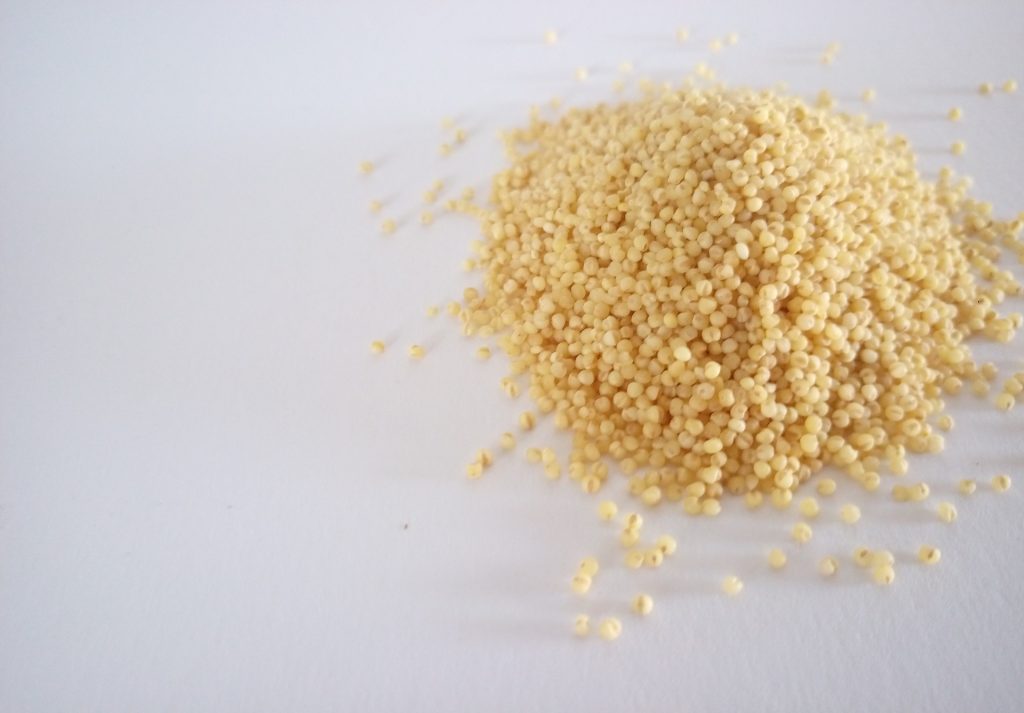Looking for a tasty whole grain to add variety to your meals? Why not try millet? Millet is used in many cultures around the world, from flatbread in India, to beer and porridge in Africa. It is also produced in China and other parts of Asia.

Why Eat Millet?
- Millet is a good source of magnesium and cancer-fighting antioxidants.
- Like other whole grains, it may help control blood sugar, cholesterol, and overall risk of cardiovascular disease.
- It is naturally gluten-free, so it is appropriate for those who cannot tolerate gluten or wheat products.
- 1/2 cup of cooked millet provides about 143 calories, 4 grams of protein, and 2 grams of fiber.
Helpful Tips
Millet can serve a variety of purposes, depending on the way it is prepared. It is generally cooked in boiling water similar to rice, with about 2 cups of liquid per 1 cup of millet. Here are some additional cooking tips:
- Toasting — toast millet in a dry pan before adding water, then cook as directed. This will add a nutty flavor and help the grains stay separate, making them fluffy like rice.
- Stirring frequently — boil in water as directed, but stir often and add extra water as needed. The result will be sticky or creamy (depending on how much water is used), which works well for hot cereal, burgers, or meatloaf.
- Grinding — use a spice grinder to grind millet seeds. Then add to baked goods, or whisk into boiling water for a polenta-like consistency.
Incorporate millet into your next meal with our Black Bean and Millet Medley.

Did You Know?
In the United States, millet is most commonly known for its use in bird feed. However, popularity as a food source is increasing as more research is done on the health benefits of this versatile gluten-free grain.


